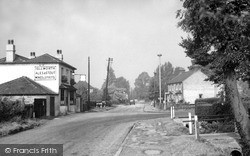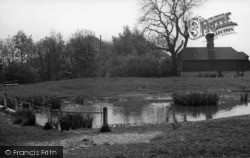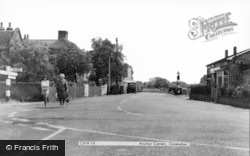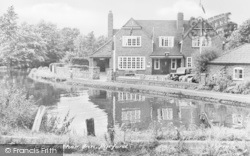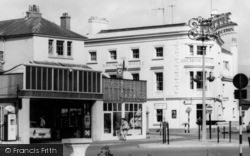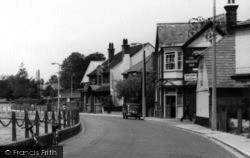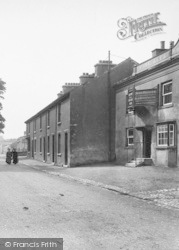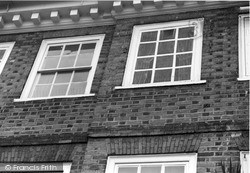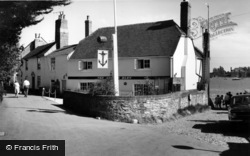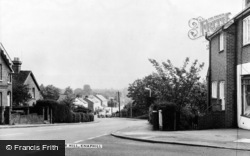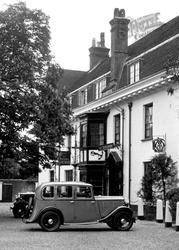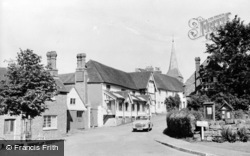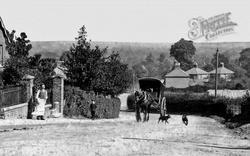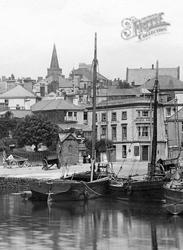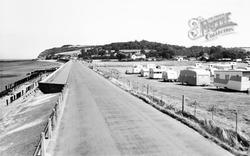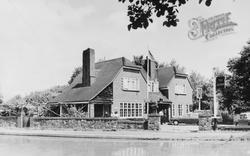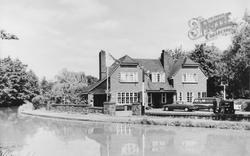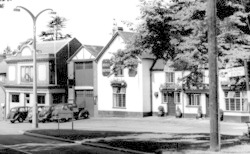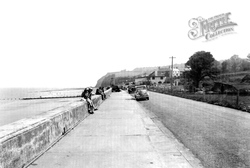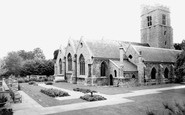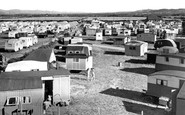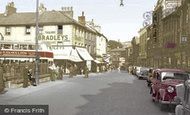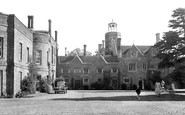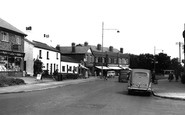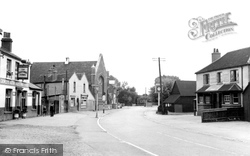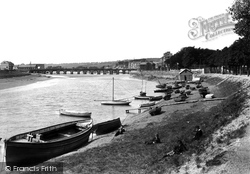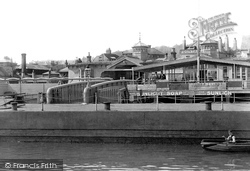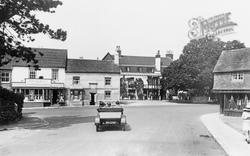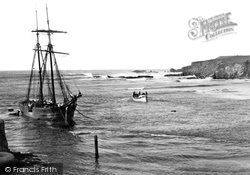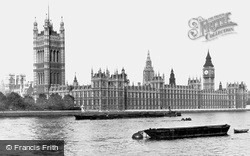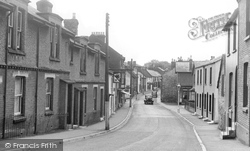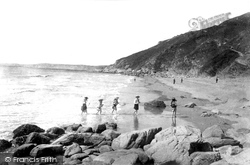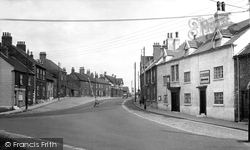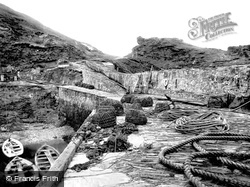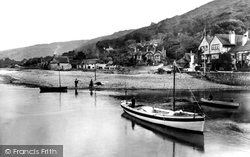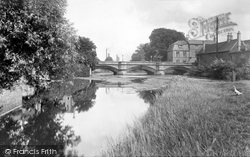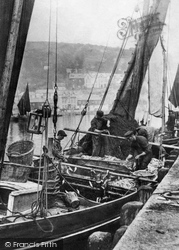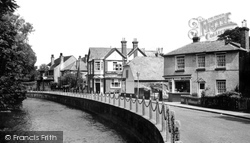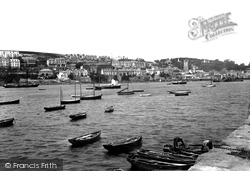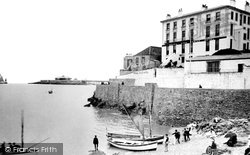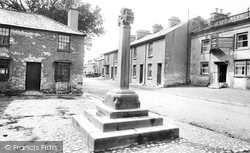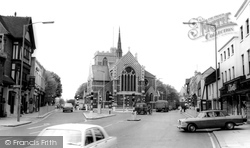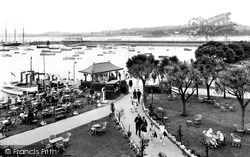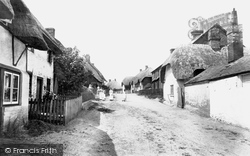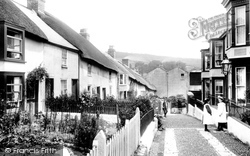Places
7 places found.
Those places high-lighted have photos. All locations may have maps, books and memories.
Photos
330 photos found. Showing results 41 to 60.
Maps
33 maps found.
Books
Sorry, no books were found that related to your search.
Memories
105 memories found. Showing results 21 to 30.
Heston In My Youth 1954 Onwards...
My parents moved to Heston in 1954, I was one. My uncle owned Heston Garage, his name was Bill Biggs, he lived above the garage for a while before building and living in the Bungalow next door. My sister and I went ...Read more
A memory of Heston in 1954 by
Davenhill School
I used to live in Aintree Lane, by St Giles's Church in the only council houses. I'm one of twelve children - the Ferrie's, and everyone knew at least one of us. I remember playing in Aintree race course, skating around the ...Read more
A memory of Old Roan Sta in 1959
Ty Gynn Caravan Site
Hi, My family used to holiday in a caravan on Ty-gynn (sorry unsure of the spelling) camp site, we holidayed there from the late 1960's to about 1974. The caravan belonged to the mother of a work mate of my late father, the ...Read more
A memory of Towyn in 1968 by
Market Square/Anchor Lane
Market Street/Square holds lots of memories. Those underground toilets, buses maneovering round to take us home to the Marsh, which when young seemed miles away. My father was born in Anchor Lane, and there used to be ...Read more
A memory of Lancaster in 1948 by
The Kidd's Alright
THE KIDD IS ALRIGHT The daylight had faded away and dusk was now dim enough to coax the streetlights to pop on, their vague orange light slowly getting brighter as their bulbs warmed. Meanwhile inside the Hamblett ...Read more
A memory of Moston in 1972 by
Saturday Girl In Snows The Bakers.
I worked for 3 years as a Saturday girl in Snows the bakers (in fact the head office at the time) at the Brondesbury end of Kilburn High Road. It was not far from the Foresters Hall which I ...Read more
A memory of Kilburn in 1951
The N.H.S. Early Years To Retirement
The Transport Department at Southmead Hospital when I joined them consisted of an officer, foreman, and four porter drivers, with two buses, three vans, and two cars. We were responsible for ...Read more
A memory of Bristol in 1960 by
Family Visits
I have many memories of visiting my Grandparents, George and Liza Ireland, who lived on the end of Major's Terrace, (I think it was called then) next door to the Crown and Anchor (now the Pottery). A particular fond memory is of ...Read more
A memory of Mosterton in 1949 by
Memories Of Point Clear Bay Near St Osyth In The Mid 1950s& 60s
My family and I used to spend our holidays at Point Clear almost every year during the late 1940s, 50s and 60s, and often met the same families each time we went down there. I ...Read more
A memory of St Osyth in 1956 by
Growing Up In The 70s
I was born and brought up in Thingwall Drive, right on the boundary of Irby and opposite the entrance to the golf course. I went to Irby CP School, Coombe Road, and then onto Calday Grange Grammar School. My Granny lived just ...Read more
A memory of Irby in 1976 by
Captions
151 captions found. Showing results 49 to 72.
The Anchor has since undergone a change of name to the Old Court House, in recognition of a tradition that it once was the venue for court proceedings.
However, the pleasure boats no longer anchor here, and youngsters do not play in the tidal mud: far too risky these days.
The early local historian Sir John Oglander remarked that he saw some 300 ships riding at anchor there in 1620.
The early local historian Sir John Oglander remarked that he saw some 300 ships riding at anchor there in 1620.
Standing in the shadow of a chestnut tree, the Royal Anchor Hotel, once a posting and coaching house, dates from the time of Samuel Pepys, who found 'good, honest people' there.
The schooner anchored here, awaiting high tide to allow it to enter the canal, is the 'President Garfield'. The lifeboat is the third one to be stationed at Bude, the 'Elizabeth Moore Garden 2'.
It is a summer morning, and high tide outside the Palace of Westminster, with barges at anchor. To the left is Westminster Abbey.
During a French attack on England in 1545, a large fleet of warships anchored off Brading harbour in the hope that the English fleet could be lured out of Portsmouth.
During a French attack on England in 1545, a large fleet of warships anchored off Brading harbour in the hope that the English fleet could be lured out of Portsmouth.
It is probably the most dived-on wreck in Britain - on calm summer days there is usually a large fleet of dive boats anchored at the site.
As well as the Smiths Arms again visible in the centre distance, we can also see two more public houses here - the Hope and Anchor, the long white building on the right, and the Bull and Dog immediately
The loosely-coiled mooring ropes, the lobster pots, the Admiralty-style boat anchor and the nets provide clear evidence of a thriving fishing port, although the jetty was used also at this
In this view from the harbour wall The Anchor Hotel is on the right, while the cottage on the left is today hidden by public lavatories.
Opposite is the mansard-roofed Anchor Inn.
A three-masted barque and a brig lie at anchor below Hall Walk.
On the right is the Anchor Inn, at this time owned by the brewers Strong & Co of Romsey. It has now been converted into flats and a doctor's surgery.
The anchor in the sternsheets, and the rope, might possibly indicate their intent of rowing out to one of the larger moored craft, using the boat as a tender.
This later view of Anchor Head shows yet more developments on Birnbeck, including the construction of the low-water westward jetty, which allowed steamers to berth at any time or state of the tide.
John Burrow is shown as the licensee on the board on the Hope and Anchor Inn (right). A porch replaces the steps to the entrance door today.
From the Crown and Anchor pub on the left, the A6 trunk road heads away to Hadley Wood and on to Coventry, while on the right, the gleaming frontage of Clark's shoe shop reflects the passing scene.
In Nelson's day the entire British fleet could anchor within the sheltering arms of the bay. Napoleon Bonaparte, a prisoner on HMS Bellerophon after Waterloo, compared the scenery to Elba and Italy.
Sixty years earlier the village had five inns and taverns, all of which took in paying guests; the Crown & Anchor, the Jolly Sailor, the Red Lion, The Ship, and the White Swan.
Slate-roofed Anchor View and Lee View, built in 1888, still remain, although the two distant cottages have now gone. Chalfont Cottage would eventually lose its thatch.
Sherborne Lane is shown here when the Crown and Anchor, the large building at the foot of the hill, was still open.
Places (7)
Photos (330)
Memories (105)
Books (0)
Maps (33)


